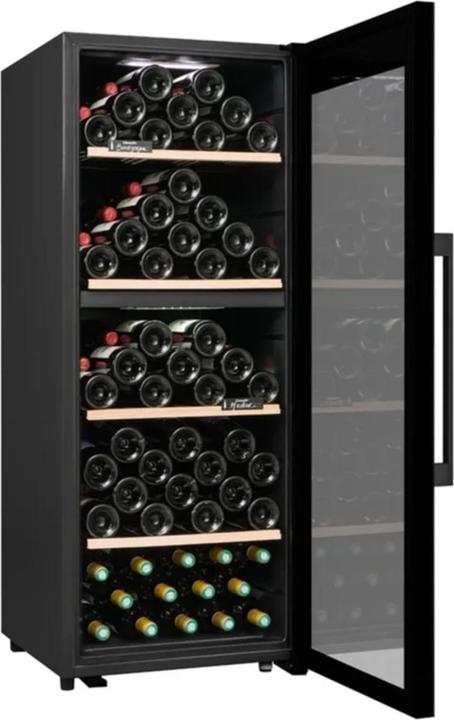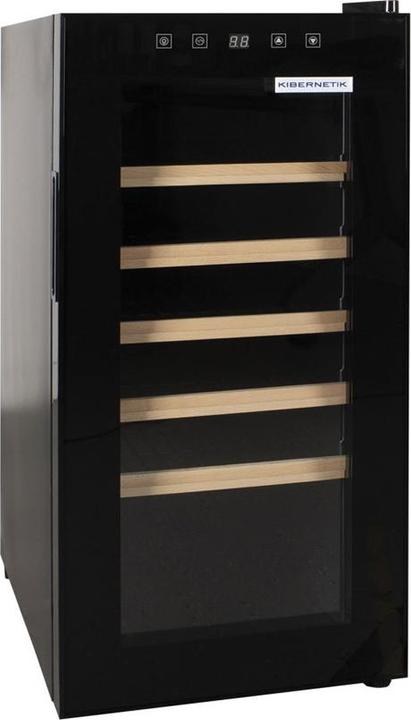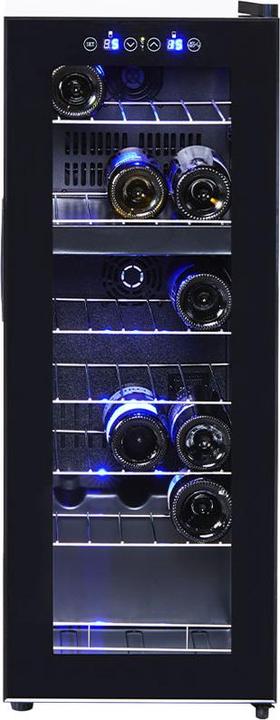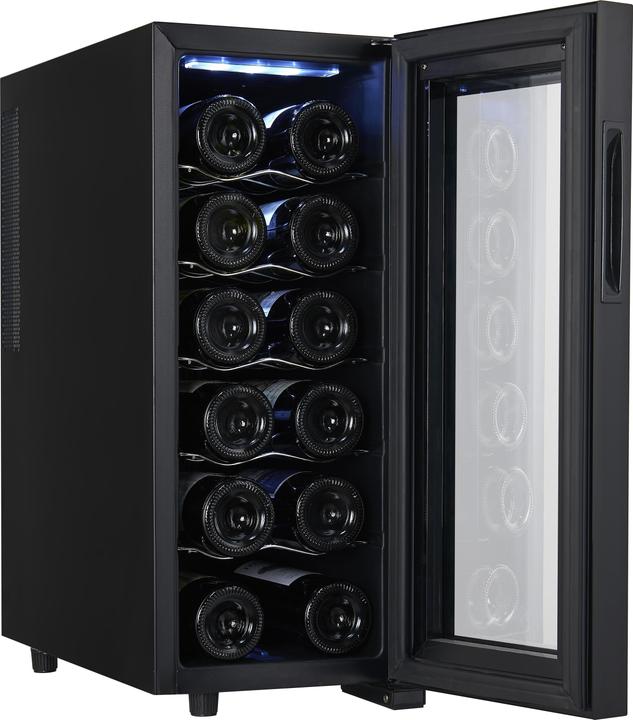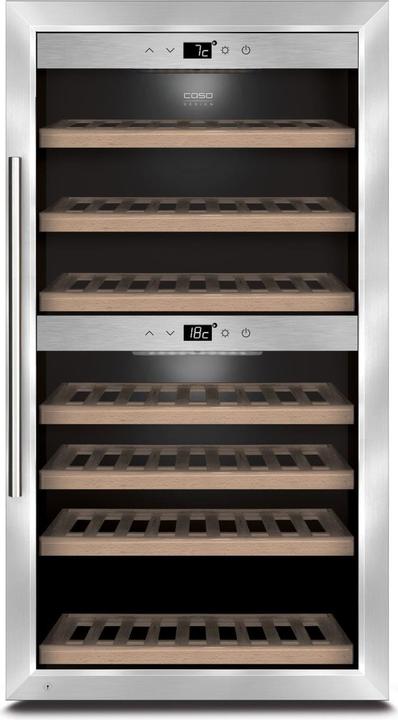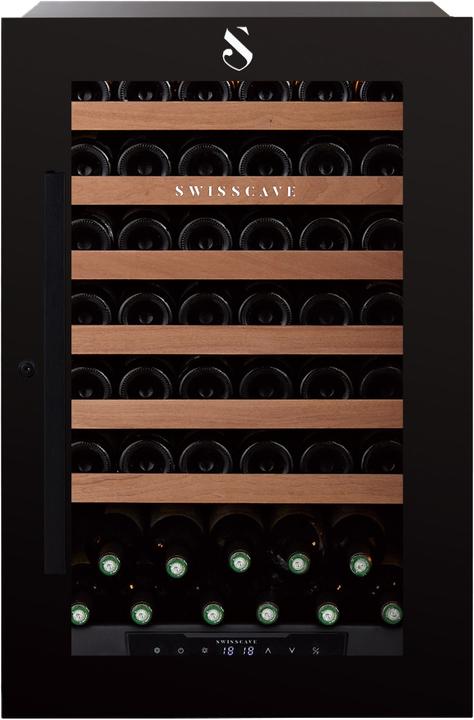
Too Many Wine Coolers? Here's How to Choose the Right One
Discover the key features to consider when selecting the perfect wine cooler for your needs.
Last updated 6 days ago. Automatically generated content.


Select options and limit the number of products
Total capacity of a wine cooler determines how many bottles it can hold, affecting storage convenience and space requirements. Choosing the right capacity is crucial for ensuring adequate storage for both everyday use and special occasions.
Popular options
Up to 100 l
Typical price
240.– to 490.–Compact size ideal for limited spaces and small collections.
Perfect for casual wine drinkers or those with limited storage needs.
Bestseller
101 - 300 l
Typical price
550.– to 1300.–Medium capacity suitable for moderate wine collections.
Great for enthusiasts with a growing collection or frequent hosts.
Bestseller
301 - 500 l
Typical price
1200.– to 2400.–Large capacity accommodates extensive wine collections.
Ideal for connoisseurs and those who entertain regularly, providing ample storage space.
Bestseller
Bottle capacity refers to the number of wine bottles a cooler can store, directly affecting storage needs and space usage. Choosing the appropriate capacity is crucial for ensuring the wine cooler meets your consumption habits and fits your available space.
Popular options
Up to 40
Typical price
270.– to 680.–Suitable for individuals or small households with moderate wine consumption.
Compact size makes it ideal for kitchens or living areas with limited space.
Bestseller
41 - 100
Typical price
550.– to 1100.–Accommodates larger collections, perfect for enthusiasts or medium-sized households.
Offers more flexibility in organizing different wine types and vintages.
Bestseller
101 - 200
Typical price
1100.– to 2700.–Designed for serious collectors or large households with extensive wine needs.
Provides ample space for aging wines, ensuring optimal storage conditions for long-term preservation.
Bestseller
Max. noise level refers to the amount of sound produced by a wine cooler during operation. It is important because quieter models offer a more peaceful environment, especially suitable for homes or spaces where noise can be distracting.
Popular options
Up to 38 dB
Typical price
550.– to 2200.–Offers minimal noise output, comparable to a quiet library setting.
Ideal for living rooms or kitchens where maintaining a serene atmosphere is crucial.
Bestseller
39 - 41 dB
Typical price
440.– to 1200.–Produces a moderate noise level, similar to a quiet conversation.
Suitable for areas where slight ambient noise is acceptable, such as dining rooms.
Bestseller
42 - 50 dB
Typical price
520.– to 1300.–Emits a noticeable amount of sound, similar to a refrigerator hum.
Best for spaces where moderate noise is tolerable, such as basements or garages.
Bestseller
Temperature zones in wine coolers refer to the distinct areas within the appliance that can be set to different temperatures, accommodating various types of wine. This feature is crucial for preserving the taste and quality of wines, allowing consumers to store red and white wines at their optimal conditions simultaneously.
Popular options
1 - 1
Features a single temperature zone suitable for storing one type of wine at its optimal temperature.
Ideal for casual wine drinkers who primarily focus on one kind of wine, ensuring consistent preservation.
Bestseller
2 - 2
Includes dual temperature zones, allowing separate settings for different wine types.
Perfect for wine enthusiasts who enjoy both red and white wines, maintaining each at their respective best-serving conditions.
Bestseller
Choosing the right wine cooler brand can significantly impact the quality and longevity of your wine storage. Brands like Swisscave and Haier stand out for their specialized cooling technologies and reliable performance, ensuring your wines are preserved at optimal conditions.
Popular brands (you can select more than one)
Kibernetik
Known for durable and efficient cooling systems.
Ideal for budget-conscious consumers seeking reliable, entry-level wine storage options.
Bestseller
Haier
Renowned for innovative designs and energy-efficient cooling technologies.
Perfect for those looking for stylish and modern wine storage solutions.
Bestseller
Caso
Specializes in compact and sleek wine coolers.
Offers space-saving solutions for small apartments or kitchen spaces.
Bestseller
Trisa
Offers versatile and user-friendly wine cooler models.
Suitable for consumers who prioritize ease of use and adaptability.
Bestseller
Swisscave
Known for premium quality and advanced cooling systems.
Great for wine enthusiasts seeking professional-grade storage with precise temperature control.
Bestseller



